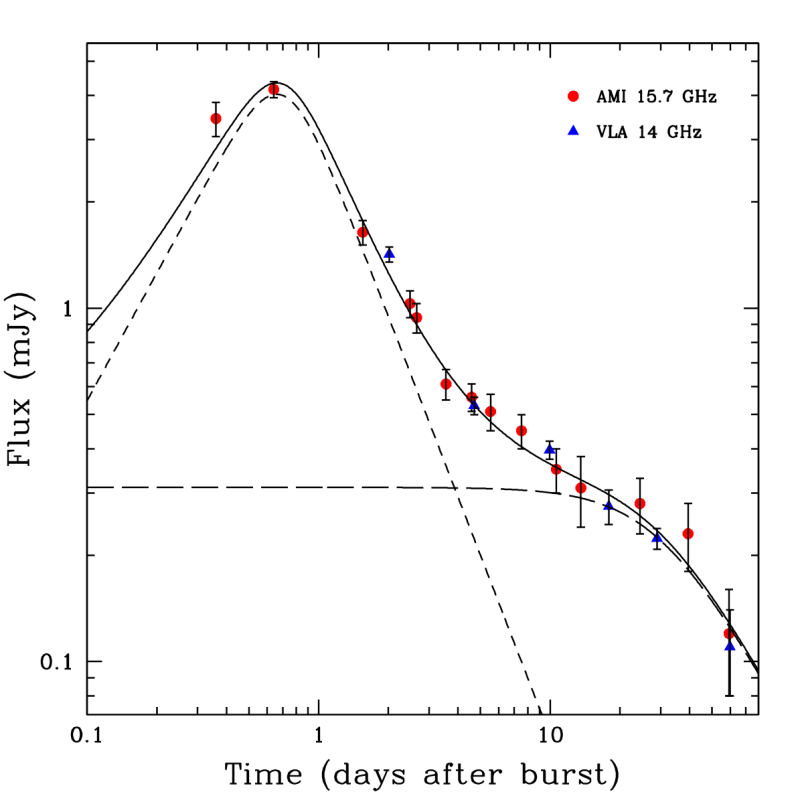4PiSky Authors: Gosia Pietka / Rob Fender
See the full publication on Astro-ph.
Synchrotron-emitting radio sources can undergo flaring events that cause dramatic variability in their lightcurves. One of the earliest models for these radio flares describes a cloud of relativistic particles and magnetic fields expanding into a surrounding medium. In this model, at a given frequency, the evolution of the light curve of an expanding cloud is determined by increasing transparency, causing an increase in the flux density, with expansion losses reducing the internal energy.

Exponential rise timescale as a function of peak radio luminosity for the entire set of radio flares studied. Overplotted are lines corresponding to a fixed minimum brightness temperature (TB,min ), demonstrating that TB,min is an increasing function of luminosity, peaking just above the theoretical limit of 10^12 K for the most luminous AGN.


